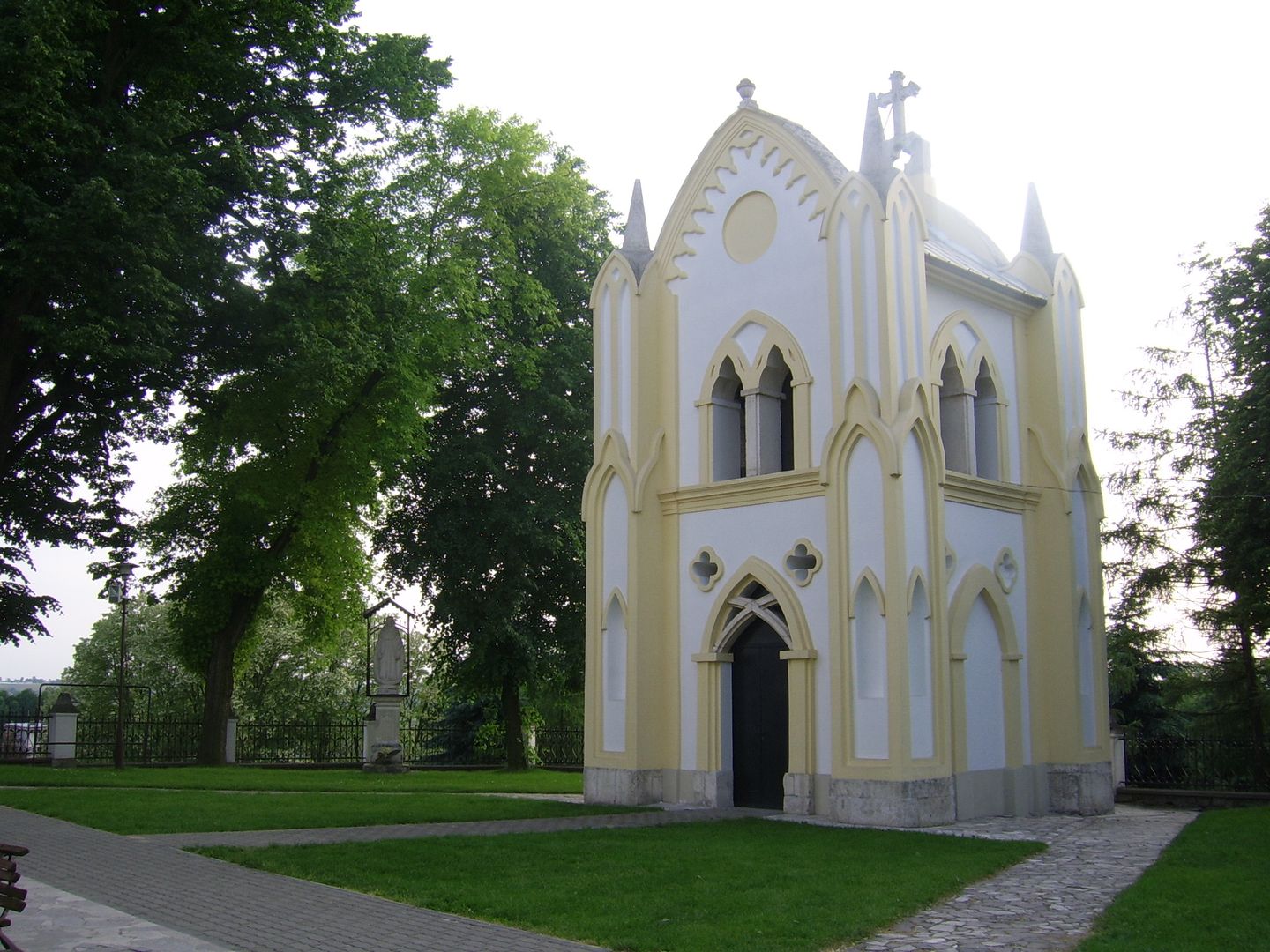St. Adalbert's Church in Kościelec
6.46

Overview
St. Adalbert's Church in Kościelec, built between 1231 and 1242 from the foundation of Kraków Bishop Wisław of Kościelec, is a unique example of a rural Romanesque church in Lesser Poland. It is characterized by impressive stonework details made of Pińczów limestone and brick laid in the Wendish bond pattern. The temple has three naves, and its oriented chancel is closed with a semicircular apse. Although the church underwent significant transformations, original sections have been preserved, including elegant galleries with richly decorated columns and triforium arches. After being destroyed by the Polish Brethren at the end of the 16th century, the church was rebuilt in the 17th century. As a result of these works, its original appearance was altered—Baroque elements were added, such as vaults, a facade gable, and new windows. The magnificent Baroque interior furnishings, including the main altar with a painting of the Mother of God with Child and a pulpit with sculptures of saints, attract visitors' attention. The Romanesque entrance portal, with three pairs of columns decorated with carved plant motifs, is another significant architectural element. The church, serving a parish community of over 3,700 people, is located in a picturesque area, and the church complex also includes a neo-Gothic bell tower, a chapel, and an organist's house. The interior is adorned with Baroque details, as well as elements from the 19th century. The church is an important part of local culture, with a rich history and relics that attract the faithful. It is also a testament to bygone eras, combining Romanesque and Baroque elements, making it not only a place of worship but also an architectural gem of the region. It is worth emphasizing that the church was rebuilt with inspiration drawn from the past, which enriches its significance in the context of Poland's cultural heritage.
Location
2025 Wizytor | All Rights Reserved